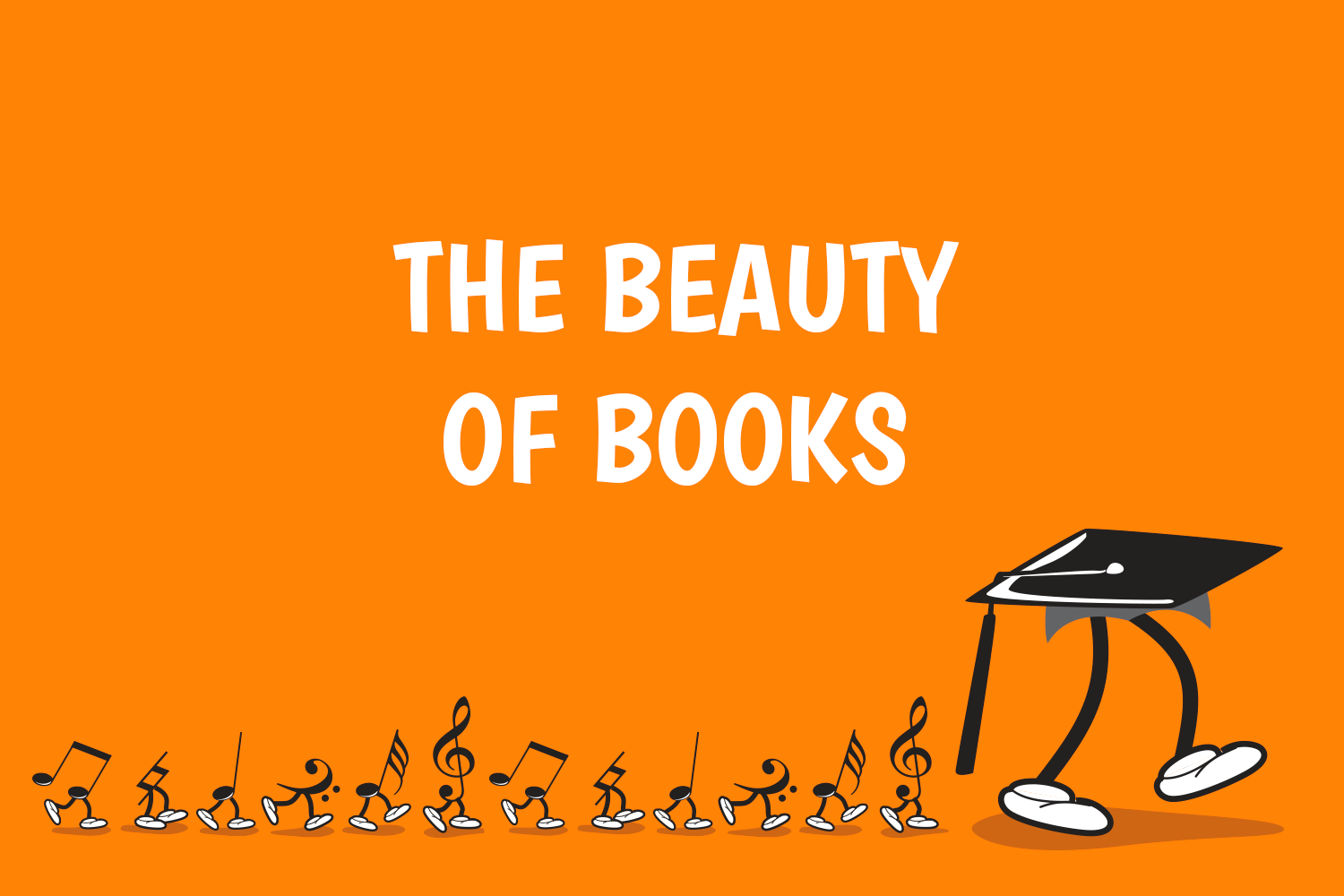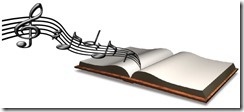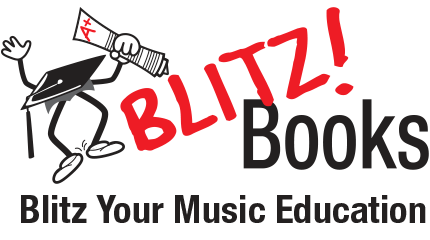The Beauty of Books

…and the Consequence of Copies

Call me old-fashioned, but I love using music books. I insist that all of my students buy them. To me, a music book is something you have for life, an addition to a library, a nostalgic possession that can be passed on to the next generation of musicians.
However, I feel like I’m fighting a losing battle. In this digital age, today’s music students are increasingly expecting to get all of their music instantly, electronically, and without paying any money.
But is this the way of the future? Just as book collections may become a thing of the past as people move towards e-readers and Kindles, will it become so easy and economical to access music digitally that music books will become redundant? As much as I love the volumes on my music bookshelf, I don’t think my digital native children will view it in quite the same way. So as we move further into the 21st century, we need to educate ourselves, our students and our parents about what is ok and what is not when it comes to photocopying and downloading music.
Sometimes it is perfectly legitimate to obtain a ‘copy’: it may be a public domain work downloaded from a reputable site like imslp.org, or an original composition that has been made freely available by a young composer.
But unfortunately, all too often the acquisition of music is not so legitimate. It’s a deliberate money-saving venture, where one user purchases a new music book and allows another user to photocopy it, therefore avoiding having to buy it for themselves. Even more unfortunate is the fact that many teachers knowingly and willingly photocopy music that is still under copyright and give it to their students, and the parent is not even aware that this practice is illegal.
The photocopying of music that is still under copyright impacts hugely on the music community: composers, publishers and retailers all suffer. Being a publisher myself, I am particularly sensitive to this issue. Piracy not only costs the music industry millions of dollars each year – in the end it creates a vicious cycle for the user, because it forces the cost of music up.
In Australia, the vast majority of students who undertake exams do so with the Australian Music Examinations Board (AMEB). I myself came through the AMEB exam ‘system’, and in my student years I remember doing the following from time to time:
· Learning from photocopies that my teacher gave me
· Borrowing the original from my teacher for use in the exam
· Only bringing a photocopy into the exam if it was to facilitate a page-turn, and feeling nervous even about that because I knew that photocopies were ‘banned’
Having become a publisher I now cringe at the amount of photocopies I used as a child. It was a common practice and no-one thought much of it. These days, there is a broader awareness of piracy and although some teachers choose to ignore it and still follow the procedure described above, many teachers encourage their students to purchase music legitimately. Any legitimately acquired music is perfectly fine to bring into an exam room, even if it is on A4 sheets of paper and not in books.
The trick here is to understand what is legitimate and what is not. Many people think it’s ok to photocopy anything by Beethoven, since he has been dead for more than 75 years. But a work by Beethoven contained in an edition that is less than 25 years old is still in copyright and may not be photocopied.
I recently contacted Bernard Depasquale, CEO of the Australian Music Examinations Board, asking for clarification about the use of photocopies and sheet music downloads in exams as opposed to ‘originals’ (meaning music in books). Below is an extract of Bernard’s response, reproduced with permission, which explains (incredibly well) the copyright laws that we should all know and understand:
“There are actually many examples of a piece that is in the public domain (that applies to the majority of ‘classical music’) that it is not legal to photocopy. Most public domain pieces are published in editions that maintain their own copyright over the published edition and hence cannot be copied. While establishing a piece being in the public domain is normally quite easy, establishing whether a published edition is under copyright or not is very difficult. There are many other reasons why a ‘public domain’ work may be under copyright still. There are many songs where the music may be in the public domain but the lyrics are under copyright, or vice versa. Often an original composition may be in the public domain but the work published is an arrangement and the arrangement is a new artistic work and therefore under copyright. Many of these things are difficult to assess, especially for a person with little experience in tracking the ancestry of a piece.
For this reason AMEB is somewhat reluctant to publish formal statements on copyright because people tend to take the bit that they want to take (public domain so I can copy it) and forget the bit they don’t want to take (published edition under copyright so I can’t).
However the following is a correct statement of copyright law as we understand it.
An exception to copyright applies: This can refer to public domain works that are available as downloads, for example from sites like IMSLP. We advise that before photocopying, users ensure that not only is the music public domain in Australia but that the printed edition is also free to use and is not covered by copyright. This information is generally available on the website from which the file is being downloaded.
The relevant music publisher has granted permission for the candidate to make a copy: There are some downloads or publications where photocopying is permitted by the publisher. You can contact the publisher or do some research to ensure photocopying of the music is permitted.
There are two problems with the above. Just because something is on IMSLP it doesn’t mean it is not under copyright in Australia. Music copyrights, and particularly sheet music copyrights vary quite considerably from territory to territory. The second problem is that while IMSLP takes some trouble to try to meet copyright laws, most online sites that offer free sheet music do not. They are just peer to peer sharing sites that blatantly disregard publishers and composers rights and illegally provide free sheet music. People tend to read ‘IMSLP’ and then interpret this as ‘any sheet music on the internet.’
Establishing whether a piece of music is under copyright or not is often extremely difficult and trying to make definitive statements on the topic is also very difficult. As you can see from my email, I have made one or two definitive statements followed immediately by many exceptions to these. For that reason we insist that people use original music for published music that is under copyright and recommendpeople use original music wherever possible because it removes one source of anxiety from what is for many people an anxious experience – doing an exam. And we do, in the end, emphasise to people that when using copies, they need to take responsibility for ensuring it is a legal copy.”
Bernard’s summary of copyright, whilst extremely helpful, unfortunately falls outside the realm of understanding of many. There are so many issues to consider, and for every ‘rule’ there is always an exception. The world of copyright law is ever-evolving and as teachers we need to be vigilant about keeping up with it as well as being ambassadors for the composers who write the music we teach. For this reason alone it is a good idea to encourage the purchase of music books, because we can be sure that all the legalities have been taken care of.
In addition to alleviating the burden of copyright compliance, music books help students to be more organised. Students who play from photocopies (whether legal or not) are constantly dealing with pieces of paper. Pages are easily lost or damaged, and whilst it is usually possible to go and print it out again, this takes up valuable lesson or practice time (and is not so great for the environment!).
Another wonderful thing about a music book is that it usually contains a certain set of repertoire. A volume of sonatas, for example, or a book of jazz pieces. Working from a printout of Bach’s Prelude no. 1 in C major, or Chopin’s Etude no. 4 in E minor, means that the student does not see these pieces in the context of an important musical compilation.
Whether or not we choose to embrace the digital age, there are still good reasons to purchase books. Students will build a music library, not a pile of paper. As they progress through to higher levels of music, old books can be used as extra repertoire, perfect for sight-reading practice. When they become adults, they will pull out their old music books and [hopefully] have fond memories of learning their pieces, as they pass the books on to the their own children. If we help our students foster a love of music books, we can not only reinforce that music books are a wonderful investment, but we can also help our existing music community to thrive.
